City of Champaign Human Relations Commission met April 3.
Here is the minutes provided by the Commission:
I. Call to Order
II. Roll Call
III. Approval of Meeting Minutes: March 6, 2017
Motion: Turner 2nd: W. Comer Minutes approved
IV. Correspondence/Announcements
a. Illinois Department of Employment Security – Work 4 Illinois Workshop & Recruitment b. Habitat for Humanity – Women Build “How To” clinic c. Disability Resource Expo – Exhibitor Meet and Greet, Save the Date – Barbara Bressner report on 2018 Expo
V. Staff Reports - Rachel Joy, Community Relations Manager/Compliance Officer
a. Community Relations Office Monthly Activity Reports b. Hiring Report
VI. Special Presentation
a. Police Body Camera Informational Video
VII. Audience Participation
VIII. Community Presentation
a. CU Fresh Start – Tracy Parsons, Community Relations Manager and Vivian Gray, CU Fresh Start Project Manager i. Tracy Parsons, facilitator of Community Coalition, which meets monthly and can have anywhere from 80 to 100 people attend meetings each month. Tracy attended a little more than a year ago to provide an update on Community Coalition, but there have been new commissioners added since then. The community has experienced an unprecedented level of gun violence. Colleagues in Law Enforcement say they have never seen the level of gun violence that they’ve seen in recent years. It was determined that the violence issue was one we were going to address head on as a community. Law enforcement cannot arrest their way out of this issue. One of the issues at the monthly coalition meetings that I want to make sure that our community members and neighbors experience this violence, that they don’t normalize this issue. Saw a news story about a grandma playing on the floor with her grandson and that was impetus. Started looking at different models and found Don’t Shoot. Went to Peoria to learn more. At the same time, there was a state conference that 18 community representatives attended to find out what communities across the state and across the country are doing to address gun violence. CU Fresh start is the unique name to our approach to solve gun violence.
ii. There were 127 shooting incidents in 2015. We started the Fresh Start initiative last year and finished 2016 with 112 shooting incidents. This represented minimal progress. That level of shooting is unacceptable in our community and something that should have all of us joining in and asking “what can I do to be involved?”
iii. A part of our presentation is to make a community plea that it really does take everyone to be involved.
iv. Another point that often comes up when Tracy hears about this issue: Law enforcement would always say that we don’t have a gang problem. We have more of what Chief Cobb would call a clique problem. These are groups of primarily black males that form around neighborhood associations, family associations, and are very fluid and may change from clique to clique. We have to be comfortable and honest as a community to say that. Our group of violent offenders are primarily between the ages of 18-28.
v. Also present is Vivian Gray, our data expert. He has been with Fresh Start since January and he is phenomenal. Vivian has done a great job of organizing the initiative. We secured some funding, and after receiving approval in October, were fortunate to bring Vivian onboard. He will talk about the organizing and structural work. We are attempting to document and gather complete data in the process. We want to be a best practice community.
vi. CU Fresh Start is a community-led focused deterrence and preventive initiative. Law enforcement and community will be working together to address this issue.
vii. Vivian Gray – CU Fresh Start is one that is called a focused deterrence response, which has a specific set of features and addresses a specific problem.
viii. The call-in meetings are just one of the models used as a means of communicating directly with the offenders.
ix. ARE WE THERE YET? In an ideal world, we would be engaged in stage 1: identify what the problem is, the victims, and the causes, then develop an implementation plan and a response plan. We would then have an ongoing assessment to see if the problem is changing.
x. Because of the urgency of the situation and the unprecedented levels of gun violence, we had to adopt what Vivian calls interim measures. We had to be able to respond here and now, and move in parallel tracks on planning and implementation.
xi. We will be hiring a researcher to assist us with data analysis and data gathering from the community to try and prioritize those elements of the response. We will be carrying out some activities to try and enhance the relationship between community, law enforcement, and social service agencies.
xii. We have begun the process of communicating directly and repeatedly with the offenders xiii. A Call-in has 2 steps –
1. Step 1 is identification of offenders based upon specific criteria.
2. Step 2 – offenders are asked to attend a meeting.
3. The call in utilizes the carrot and stick approach. Different states have been using the model across the country. The full research on how this online at www.campbellcollaboration.org
Next steps: Continue to provide support to those individuals who have decided to sign up. Continue planning and development of full implementation plan.
Commissioner Comments & Questions: Elmore: Great presentation. Of the call-ins done so far, I wanted to first clarify the numbers. At the October 2016 meeting, of those 17 did 9 show up? Tracy: Let me explain a bit about our process. We have a subcommittee on the MDT. We are presented with dossiers of people and we don’t see the names. Being on probation or parole requires them to show up (that is the carrot). We have a community liaison, Donte Lotts, who works at Prairie Center. We do start with a bigger group. Elmore: The process involves getting folks to come to the call-ins and then getting them to accept offers of assistance. What happens if they don’t accept the offer of assistance? Tracy: This is the exciting part of what Vivian’s work is going to help us do. Getting them engaged and leave that other life is a very difficult process. We want to learn what does it really take to get someone who has lived a life of criminality to leave that life. In the first group, he sat at someone’s house for an hour and half for someone to come home, and he met the family, etc. We are learning all along how much engagement it takes, how many phone calls it takes. He’s documenting every interaction, every call. Vivian: The initiative is both focused deterrence and focused prevention. In so far as the initiative is a focused deterrence, if the individuals determine that they don’t want to participate and continue a life of crime, there is nothing we can do to stop law enforcement from bringing the full bearing of the law. Out of our first group, we had 9 express interest. Not too long after our call-in, two of the guys got involved in a gun related crime. There was a third person rearrested, but not for a gun related crime. So we have determined as long as they are not committing gun related activities, they can continue to participate.
Bressner: Looking to the future, do you have projections of how many individuals you are hoping to engage in the next year or five years? Tracy: We have determined that we are going to let the gun violence determine how frequently we will have these call-ins. If the gun violence continues at the much slower pace that it started this year, we want to let the data drive us.
Vivian: Once we can determine what exactly is happening to cause the violence in CU, our data will determine next steps.
Young: How you get the names of the individuals you target? Vivian: First, we don’t get the names, right now we are targeting individuals 18 or older,.And because they are already in the system, there is intelligence gathering all the time. They are on the police’s radar. The police create what we call a blind dossier, which only contains the person’s criminal record. What is presented on the blind dossier to the committee, given our target of trying to reduce gun violence. Tracy: I’ve gotten calls from attorneys and family members. At this point, we are not bringing in families from various groups. Many of the folks who could connect with first followers, could potentially be involved with CU Fresh Start. When we can close those gaps we can help connect many of them.
Young: Sometimes community has eyes and ears and knows.
Felty: Is there a provision to hire a coworker for Donte if he gets stretched too thin? Tracy: A big part of Vivian’s job will be doing project management, and what Donte is doing is building the supports. We really don’t know what is a fair case management level. One of the things that Donte talks about is how to help them address court hearings. He is learning their strengths and needs, using tools to assess their needs. We don’t know what his capacity is. Felty: Sometime we will run out of Donte hours. Vivian: We are walking parallel tracks. How is it that we are going to be able to provide on a sustainable basis? Parsons: Traditional interventions have not worked for these guys; those are all the things that we’ll learn about. We’re bringing in the RPC so that we don’t have to come up with funding for employment training services. All of the systemic structural stuff is being put in place while we’re trying to stop the shootings.
W. Comer – I just want to reiterate to the community that there are no names on the dossiers. They are being picked solely on the crimes that are being committed.
Turner: What is the commitment from CUFS to the offender in terms of time? Is there a point of completion? Parsons: We’ve had some good discussions about that and at this point we are trying to build the case to a long term sustainable commitment. Turner: Is there any development for a long-term intervention? Vivian: The drivers and causes of crime are not static. The only way we can continue doing that is by doing the ongoing monitoring and evaluation. By September of this year, we should have a full implementation plan. All we’re doing right now is the interim measures as a response to these issues.
IX. Committee Reports
a. 2017 Action Plan
i. Commissioner Willie Comer: Marketing Materials. I’m talking to someone who has her degree in marketing and development. She does all kinds of flyers and understands strong marketing. Is it cards, brochures, flyers, posters, and what would be best. I’ll bring design to you. What are we referring to when we say marketing? What is it that we are asking for? FELTY: Working with another group that put some bus posters up? Does commissioner Shackelford have any ideas? Shackelford – There is a bulletin board in some of the schools. I could ask the administrators if I could put up posters and flyers? Turner: Aren’t counselor’s offices considered resource offices as well? W. Comer – We are giving these to students to do what with? Felty: I don’t know that we’re talking about giving to them. Elmore: Some of the marketing materials we talked about were things as simple as business cards, we need to talk about what our marketing strategies would be. There’s got to be a message, especially if you’re talking about schools. There has to be a message that the body can get tuned into. Young – We already have a brochure and maybe we want to focus on something as simple as feeling discriminated against or protected classes. Focusing on the educational piece. Maybe W. Comer would like to get a copy of that to tweak it or something to go along with it. Young: Be sure that we send out brochures and maybe even a letter to all the churches in Champaign that we exist and what we do that pastors can pass out to their commissioners.
ii. Commissioner Ebony Shackelford: Social Media Campaign. One of the things I think I should do is at school in the upcoming weeks is try and gauge interest in HRC, and try to talk to some of the social justice groups at central and across the community.
iii. W. Comer: Is there a student government association at Central? I would suggest connecting with them since they are already a part of student government and seeing if there is an interest in them maybe connecting with a larger part of government. b. 2017 CUIHA – Commissioner Kenton Elmore (Back-up Commissioner Barbara Bressner)
The committee met this past month. Not many updates at there are still things being putting in place. We are ramping up getting things going with social media, reaching out to businesses with sponsorships and going with a theme that emphasizes longevity. c. 2018 MLK – Commissioner Amy Felty (Back-up Commissioner Demario Turner)
No update since last HRC meeting. No update at this time.
X. Old Business
XI. New Business
XII. Audience Participation
XIII. Commissioners’ Comments
Turner: Regarding the police body cam video, one of the things identified is that cameras won’t be able to catch everything outside of officer’s control and only off the officer’s perspective. I would like to encourage the community to continue to use the technology that is available to them, such as cell phones, and continue the level of transparency. It would be beneficial to both police and community interacting with police. I would also like to encourage police to embrace that as long as it doesn’t interfere with police work W. Comer – no comments Felty – A new after school program for middle school students is going on in the big room at the library Monday through Thursday. Kids were in there enjoying themselves. There were all different ages and multiple races. I Met the new security officer who came from Douglass Branch Library and he is wonderful and welcoming. At the last Racial Taboo showing, we had 211 people come. It was hosted at McKinley Foundation. Decatur now has 3 dates to show Racial Taboo. In addition, there are people who came to the Jericho presentation. Young: Neighborhood Services Department STAR Awards will be held on April 27. Contact Neighborhood Services Department at 217-403-7070. C. Comer – I was thinking I’d like to see a police officer come in with his body cam and go through how it’s worn, when it’s used, all the way through. Encourage people to be aware of your surroundings and protect yourself when you’re out. Bressner: None Shackelford: None Elmore: Tomorrow is Election Day – make sure you vote tomorrow if you haven’t already. Voter turnout in municipal elections is generally less than the general election. There are a lot of things on the ballot that will very much affect people living in this community.
XIV. Adjournment
Adjourned: 7:00 p.m.

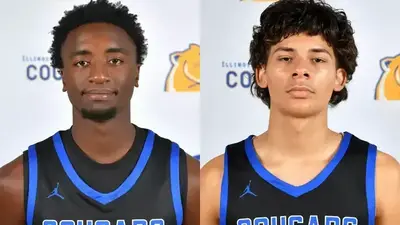
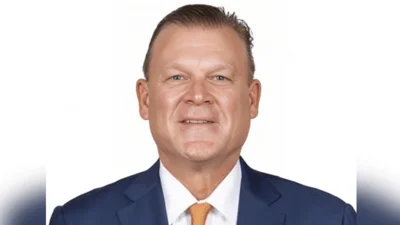
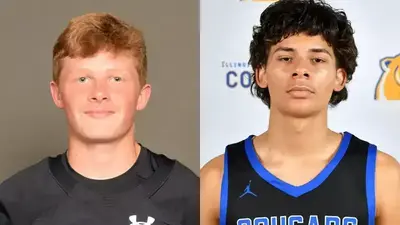
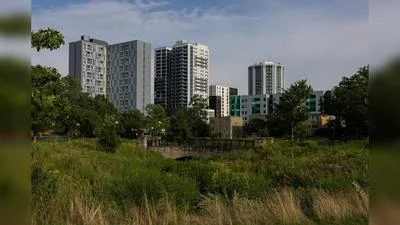
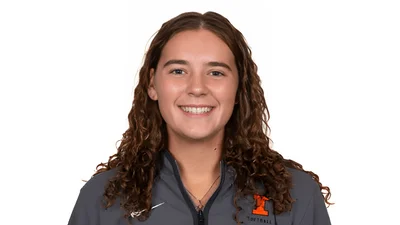
 Alerts Sign-up
Alerts Sign-up